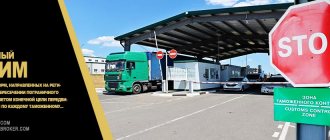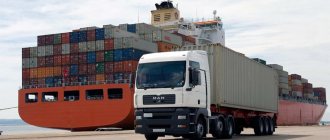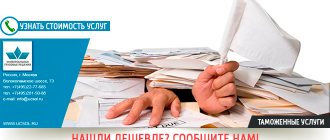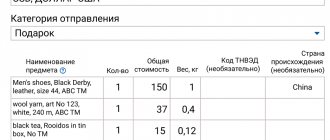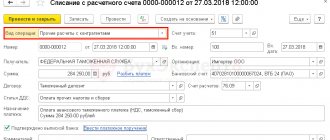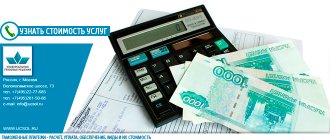It is impossible to conduct legal foreign economic activity without completing customs operations. If customs clearance is not completed successfully, the goods will not be delivered to the recipient. Which country the recipient is located in depends on the chosen direction - export or import.
ATTENTION! We work only with legal entities.
IM-40 (release of goods for domestic consumption) is one of the customs procedures, of which there are 17 in total. The full classification of customs procedures is indicated in the Decision of the Customs Union Commission dated September 20, 2010 No. 378 (as amended on October 8, 2019) “On classifiers, used to fill out documents."
What is customs regime
First of all, it is necessary to clarify: the term “customs regime” is no longer used in our legislation . After the creation of the Customs Union, the concept of “customs procedure” was introduced.
Important! In 2021, customs regime and procedure are equivalent concepts.
The content has not changed; the customs procedure refers to the status of products moved across the Russian border - export, import, transit. Regulation, duties, filling out documents and much more depend on the status of products placed under a particular procedure.
Simply put, the customs procedure can be considered a code, which, when communicated to a customs officer, conveys the complex scope of regulation introduced by our legislation.
Why are customs procedures needed?
Why are any customs procedures needed at all? How many customs regimes are there? Such questions arise in people’s minds when they first get acquainted with customs clearance regimes.
However, without customs rules and the inherent clear division of rules for products crossing the border, chaos would ensue. Modern commodity turnover is the movement of products worth billions of dollars annually . And all this must be taken into account, classified, checked (for counterfeit goods, prohibited substances, drugs, weapons). And all this needs to be done quickly, so as not to slow down civil trade turnover with unnecessary bureaucracy.
It is for these purposes that procedures (or regimes) were introduced. They limit the range of actions that can be performed with products (export, transit, etc.) and for each action they provide a full set of rules and documents that must be drawn up and filled out. Participants in the turnover (businessmen, individuals) immediately understand what documents customs will request from them, and customs officers only need to request the provision of unified documents in order to understand what is happening with the goods. And based on a clearly established list of documents, carry out a quick check and allow the goods to cross the border.
Important! The fees and duties charged by customs also vary depending on the regime under which the goods are planned to be placed.
All this together reduces uncertainty when moving goods across borders . This means it helps reduce corruption and the import of counterfeit goods.
IM-40: what is it
The result of completing the IM-40 procedure will be the release of the cargo for free circulation. All restrictions on the use of goods are lifted, but the return export of cargo under this procedure is not provided.
The implementation of customs operations is controlled by the Department of Customs Clearance and Customs Control.
During the procedure the following is carried out:
- Verification of accompanying documents and control of the declaration.
- Customs inspection/inspection of goods to prevent the import of low-quality or counterfeit products.
- Checking the vehicle transporting the cargo.
The procedure is considered to have begun from the moment the declaration and other documents are submitted. But even before this, the declarant must carry out considerable preparatory work:
- select the EAEU HS code;
- determine the rates of duties and taxes by code;
- calculate customs payments;
- collect and prepare the necessary documentation.
Types of customs operations
In the current Article 202 of the Customs Code, which contains a complete list of all regimes , there is no precise classification by which it would be convenient to group and consider customs procedures. But it is convenient to carry out such a classification of customs regimes according to their concepts and types according to Art. 155 of the old set of rules. It was divided by type into main customs regimes, as well as economic, final, and special procedures.
Basic customs procedures
The main ones include:
- Release for internal consumption . These are imported goods that are well known to all Russians, that is, imported from abroad for sale and consumption in Russia. In this case, import duty is paid for the goods.
- Export . These are domestic products sold to other countries. One of the main conditions is payment of export customs duties.
- International customs transit . This procedure applies to goods that cross our border solely for the purpose of moving through our territory to other countries. For example, products are transported from a European Union country to China. There are no transit fees.
In the minds of the average citizen, the functions of customs are limited to these three procedures. Really, what else could happen to a product? But there are many more regimes, because not only finished products are imported, but also raw materials.
Economic customs procedures
Products made from imported raw materials are often not consumed on the Russian market , but, in turn, are also exported. All these factors are taken into account when setting duties and fees, and therefore require separate control rules.
Economic procedures are aimed at optimizing the collection of customs duties in order to stimulate industrial and business activity in the territory of the Customs Union and Russia.
Economic procedures include:
- Processing in customs-controlled territory . It involves the processing of imported raw materials so that the finished product is exported to the territory of the Customs Union. Therefore, import duties on raw materials are not paid (provided that, when subsequently exported, confirming documents are presented that the goods are made from raw materials and are intended for export).
- Processing for domestic consumption . Import duties are not paid, but may require the payment of special, anti-dumping, and countervailing duties.
- Processing outside the controlled territory . According to this procedure, on the contrary, raw materials are exported - without paying export duties, which is logical - in the future, import duties on finished products will be paid, so double taxation of duties in this case is inappropriate.
- Temporary importation . Under this procedure, goods are simply temporarily imported into the territory of the Union, and the total period of stay of the goods cannot be more than two years. It is logical that under this procedure only durable goods (machines, equipment, machinery) can be imported. The point of the scheme is savings, since the fee only needs to be partially paid.
- Bonded warehouse . In this procedure, the goods are simply stored in the customs warehouse without paying any duties. As a rule, this happens when, when importing goods, customs officers have additional questions about the legality of the product or about the ownership of the declarant. Until the dispute is resolved, the goods are transferred for storage to the customs warehouse.
- Free customs zone (free warehouse). The import of goods into the territory of special free economic zones is carried out without paying any duties. But there are several conditions: such goods must be located on the territory of a special economic zone and used to conduct business activities in the same territory. In Russia, special economic zones have been created in the Kaliningrad region, the Republic of Crimea and the Magadan region.
Final customs procedures
What unites the final procedures is that they are not independent procedures , like all of the above. Such procedures apply to goods that have already crossed the border of the Customs Union and Russia, and therefore have already come to the attention of customs officers.
These are procedures such as:
- Re-export . This regime has many applications, but it can most simply be described as a situation in which a foreign product previously imported into the territory of the Union (for processing, domestic consumption) for some reason needs to be exported. For example, there may be a failure to fulfill the terms of the transaction (the buyer cannot pay for the imported goods). Re-export is also the closing procedure for processing, which we described above.
- Destruction . Applies only to foreign goods, and no import duties are payable on such goods. Counterfeit products, as well as products that violate current import bans, are subject to destruction. Despite the fact that the person importing the goods in such a situation is exempt from paying duties, the declarant is obliged to bear the costs associated with the destruction of the goods.
- Refusal in favor of the state . Our state will not mind if the declarant refuses the imported goods in its favor. Main conditions: such goods should not violate the prohibitions provided for the import of goods into the territory of Russia, and the possession of such goods should not cause losses to the state.
Special customs procedures
A special customs procedure is a broad concept that covers particularly important goods necessary to achieve national goals. The meaning of this procedure is the absence of any duties. For example, such a duty-free regime includes foreign goods and property necessary for the work of consulates and embassies, for humanitarian aid, for goods required for space exploration, the Arctic and Antarctic, holding international sports competitions, etc.
Specifics and types of customs procedures
Customs procedures are an integral part of foreign economic activity. will help you competently organize the procedure for moving cargo across the border, taking into account its destination, while maximizing costs.
The essence of customs procedures
The procedure for customs clearance of goods is strictly regulated by law. The import and export of goods into the territory of the EAEU is necessarily accompanied by customs declaration of goods.
The order of customs procedures is determined by a number of norms and depends, among other things, on the category of goods, as well as its purpose. The customs procedure (according to Article 2 of the EAEU Labor Code) is understood as a set of norms that determine the conditions and procedure for import/export, regulation, as well as the purpose and use of goods on the territory of the EAEU and beyond. The regulations on customs procedures and the procedure for clearing goods for import/export are established by the Customs Code.
The procedure for choosing a particular customs procedure is based on a number of factors
- intended purpose of the product;
- cargo status;
- logistics scheme (import/export);
- accommodation conditions;
- restrictions that apply depending on the category of goods;
- the procedure for calculating payments;
- other requirements established by law.
Any actions carried out in relation to goods crossing customs borders are established exclusively by the norms of customs procedures. The cargo clearance procedure is determined in accordance with the product code and the purpose of its transportation across the border.
Conventionally, types of customs procedures can be classified into 4 groups
- basic (most frequently used, relevant for import/export, transit);
- economic (includes conditions for processing, temporary import and storage of cargo in a warehouse);
- final (includes re-import, re-export, refusal to the state and destruction);
- special (include duty-free trade, temporary export and other procedures applicable to certain categories of goods of foreign origin).
Knowledge of the conditions and requirements of the customs code allows you to accurately place goods under a certain type of customs procedure, which will completely eliminate non-compliance with legislative norms in relation to goods moved through the customs zone.
Within the framework of various customs procedures, specific requirements for calculation and customs payments are established: in full, partially or completely absent. Within the framework of one customs procedure, a single calculation procedure is applied, which does not depend on the type of product (only the rates of customs duties and requirements for permits are variable).
Economic Policies under Different Customs Regimes
If you look closely at the specifics of regulating customs operations, it becomes clear that our legislation is created flexible. In general, it meets international standards - industrial production is welcomed on its territory.
This means higher duties on exported raw materials, lower or no duties on goods made from imported raw materials . The regime of special economic zones, on the territory of which there are extensive benefits for the import of equipment, has proven itself to be the best. However, the effectiveness of the benefits provided by special economic zones is now offset by the difficult political situation in Russia and the world.
Main types of TP
The main types of customs procedures include the most popular regimes regulating the import of products from abroad (import), the export of Russian goods abroad (export), transportation and customs clearance.
Release for domestic consumption
The procedure for importing, or releasing goods by customs for domestic consumption (within the Customs Union), allows you to legally use foreign-made goods on the territory of the EAEU. Legal use presupposes the free movement of such goods, their sale, donation, disposal and other actions provided for products of domestic production and consumption. The procedure is designated by IM code 40.
Export
TP, designated by code EC 10 (export), is applied in cases of irrevocable export of goods from the territory of the EAEU with the loss of the status of Union products. Returning such cargo back is possible if no more than 3 years have passed since export and the properties of the goods have remained unchanged. In this case, the returned goods are placed under the re-import procedure.
Customs transit
When moving cargo through the territory of one or more EAEU countries to third countries by transit, it is appropriate to use customs transit TP. It is indicated by codes EC 80 (if the goods are exported by the declarant) or IM 80 (if the declarant is an importer).
Features of declaration
The specifics of filling out a declaration for goods for each customs regime are contained in the Decision of the Union Commission dated May 20, 2010 N257 “On the form of a declaration for goods and the procedure for filling it out.”
Important! The declaration form is the same for all procedures. Only the content differs, depending on which customs procedure the product is planned to be placed under.
As a rule, in order to avoid fines, customs representatives are contacted to fill out declarations without errors . Independent customs declaration in 2021 is the lot of self-confident entrepreneurs transporting small consignments on their own.
Literature
[1] Customs Code of the Customs Union (annex to the Agreement on the Customs Code of the Customs Union, adopted by the decision of the Interstate Council of the EurAsEC at the level of heads of state dated November 27, 2009 No. 17) // SZ RF. — 2010. - No. 50. — Art. 6615. [2] Surkichin G.F. Theoretical aspects of legal regulation of customs procedures in the Russian Federation, 2014. – 318 p. [3] Matvienko G.V. Administrative procedures and proceedings in customs law // Journal. grew up rights. - 2013. - No. 12 (44). [4] Panina I.V. The role of customs procedures as a tool for customs regulation of foreign economic activity, 2015. – 476 p. [5] Matvienko G.V. Interaction and classification of customs procedures // Legal policy of the Russian Federation in the conditions of modern socio-economic development: materials of the II International. scientific-practical conf. - Rostov-n/D., 2015. – 209 p. [6] Customs Code of the Customs Union (annex to the Agreement on the Customs Code of the Customs Union, adopted by the decision of the Interstate Council of the EurAsEC at the level of heads of state dated November 27, 2009 No. 17) // SZ RF. — 2010. - No. 50. — Art. 6615. [7] Matvienko G.V. Administrative procedures and proceedings in customs law // Journal. grew up rights. - 2013. - No. 12 (44). [8] Customs Code of the Customs Union (annex to the Agreement on the Customs Code of the Customs Union, adopted by the decision of the Interstate Council of the EurAsEC at the level of heads of state dated November 27, 2009 No. 17) // SZ RF. - 2010. -No. 50. [9] Surkichin G.F. Theoretical aspects of customs procedures in the Russian Federation // Law. 2014. - No. 3. – P. 8. [10] Kovarda, V.V. Customs and tariff regulation of economic security of Russia under economic sanctions / V.V. Cowarda, R.A. Zhivotov // Current problems of international relations in the context of the formation of a multipolar world, Southwestern State University. - 2015. - pp. 48-52. [11] Rukavishnikova I.V. Method of financial law: monograph. / answer ed. N.I. Khimicheva. — 3rd ed., revised. and additional - M.: NORM, 2015. - 290 p. [12] Bakaeva O.Yu. Private and public interests and their reflection in the principles of customs law // Laws of Russia: experience, analysis, practice. - 2013. - No. 8. - P. 12. [13] Customs Code of the Customs Union (annex to the Agreement on the Customs Code of the Customs Union, adopted by the decision of the Interstate Council of the EurAsEC at the level of heads of state dated November 27, 2009 No. 17) // SZ RF. — 2010. - No. 50. — Art. 203. [14] Demin A.V. Uncertainty in tax law and legal means of overcoming it: dissertation. ... Doctor of Law. Sci. - Ekaterinburg, 2014. - 198 p.
